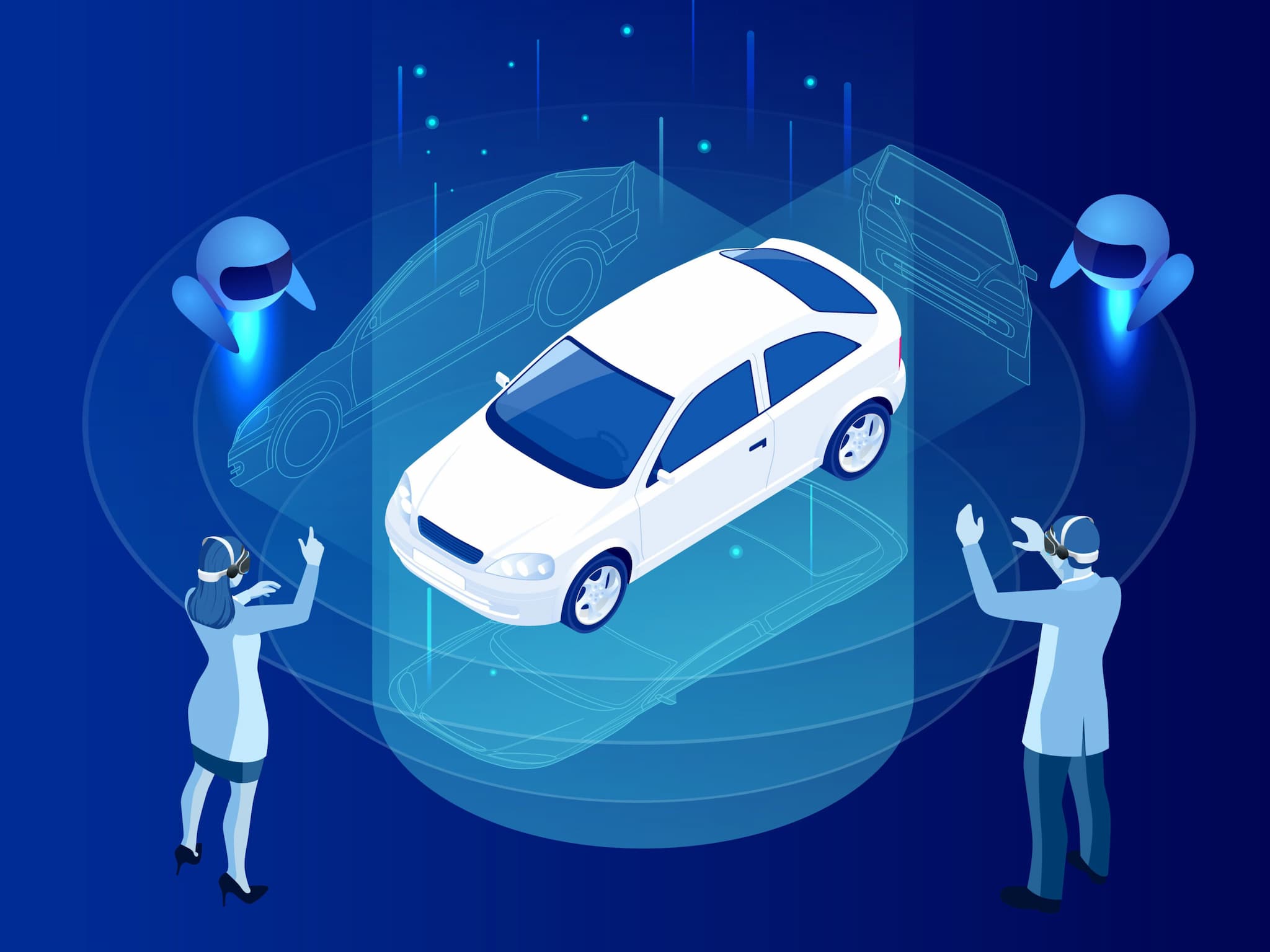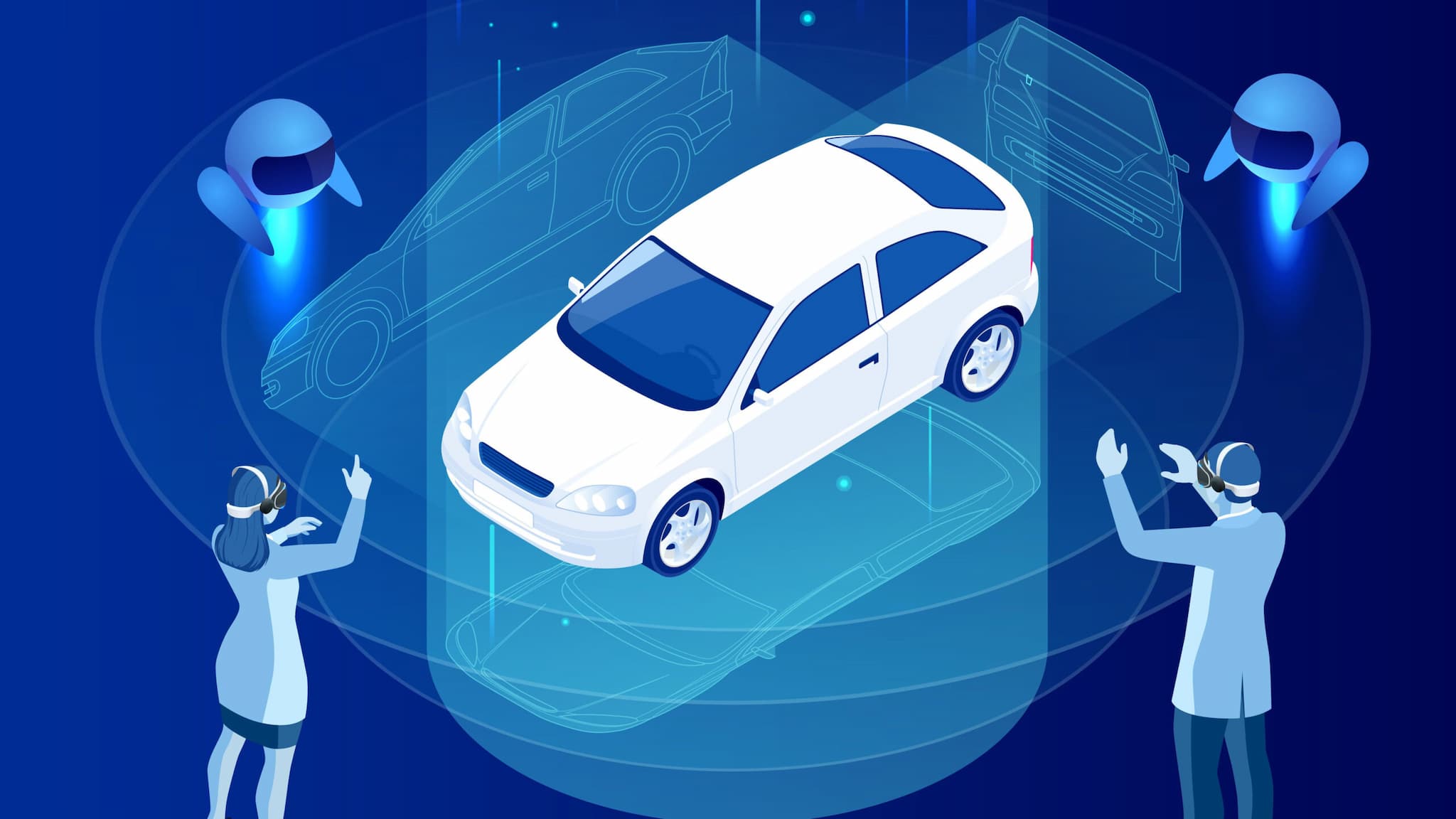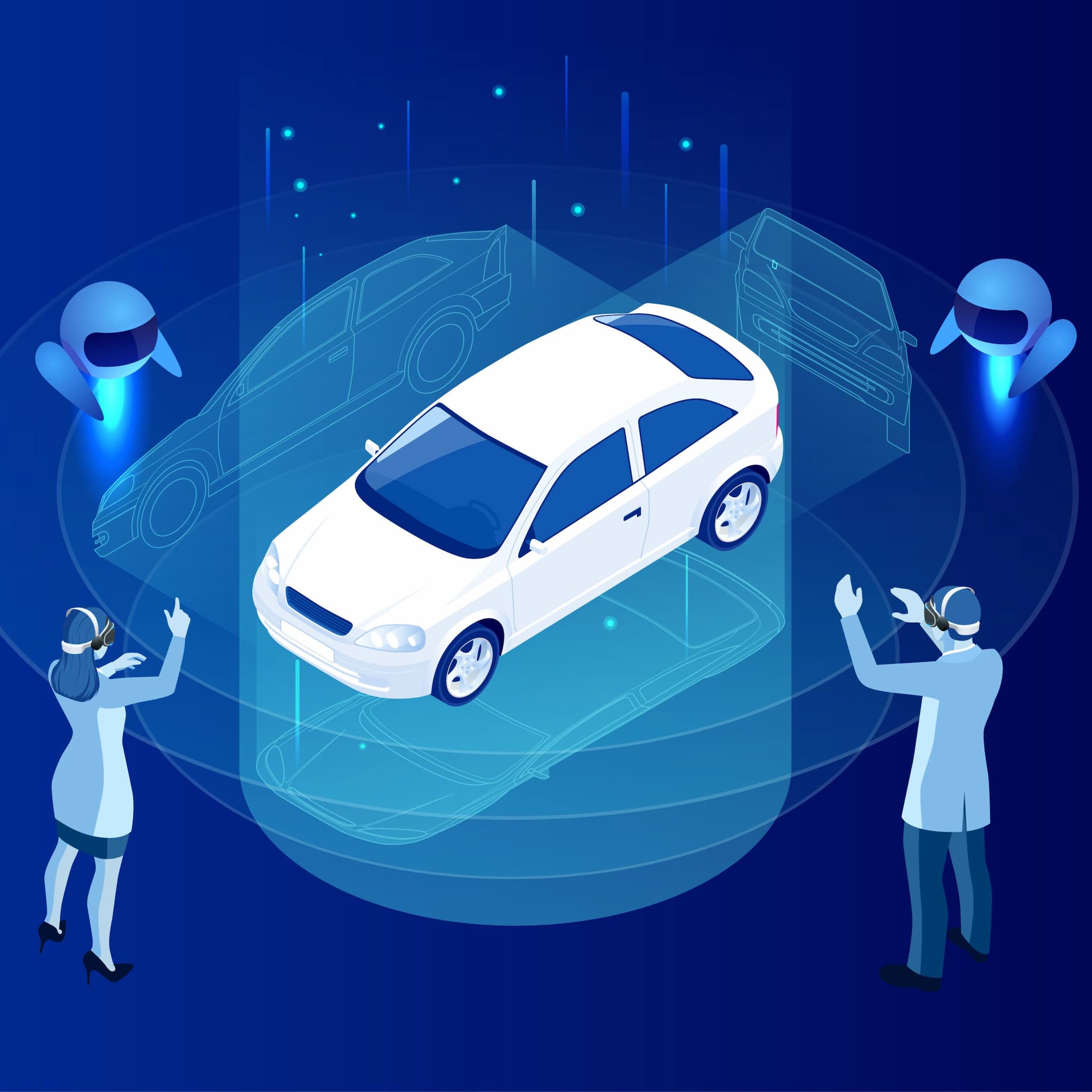Virtual Reality (VR) is revolutionizing the way we experience the world and its impact on the automotive industry is undeniable. With the groundbreaking release of the brand new Apple Vision Pro, the potential of VR in the automotive industry is reaching new heights. Imagine stepping into a virtual world where you can design, test and even drive cars without leaving the room.
This blog explores the fascinating field of automotive VR, delving into its historical roots, current applications and remarkable benefits. Discover how VR is reshaping the automotive industry and leading us into a future where the lines between virtual and real are blurred and the possibilities are endless.
Definition of Virtual Reality (VR) & areas of application
Virtual reality (VR) refers to the simulation of a three-dimensional, computer-generated environment into which the user can immerse himself using special hardware such as VR glasses. Classical applications of VR include, for example, computer games, virtual series or simulations of medical interventions. Increasingly, however, the technology is also being used in industry. A key area here is everything to do with the automobile.
History of Virtual Reality in Automotive
The application of VR in the automotive industry has a long history. As early as the 1990s, VR was used to improve collaboration between designers and engineers. However, the technology was not yet mature enough to allow a realistic representation of vehicles. Only with the further development of VR in recent years has it become possible to create realistic scenarios.
Today's application of virtual reality in the automotive
Today, VR is used in many areas in the automotive industry. One example is prototype development: With the help of VR, designers and engineers can create virtual models of vehicles and test them in a realistic environment. This allows errors to be identified and corrected at an early stage, before a physical prototype is built. This saves time and money and speeds up product development. In addition, this creates the possibility for teams distributed across locations, countries or even continents to work together on products in a (virtual) space.
VR is also used in vehicle sales: Customers can experience vehicles in a virtual environment with the help of VR glasses and thus get a realistic picture without having to physically look at the car. The customer can configure their vehicle live and virtually “test sit” it immediately.
Another area in which VR is used in the automotive industry is employee training. VR simulations can be used, for example, to teach employees how to perform certain work on vehicles without the need for an actual vehicle. This can reduce training costs and time.
Advantages of using virtual reality
The benefits of using VR in the automotive industry are many. The ability to create virtual prototypes can save costs and development time. Customers can experience vehicles in a realistic environment, which can lead to higher customer satisfaction. Employee training can be more effective because VR simulations enable realistic scenarios. Teams of experts can work together from different countries.
Conclusion
Overall, it can be said that VR has become an important part of the automotive industry. The technology enables more effective and efficient development of vehicles as well as better customer engagement. The use of VR will continue to increase in the future as the technology becomes more mature and new areas of application are developed.
Next Step X-REALITY


